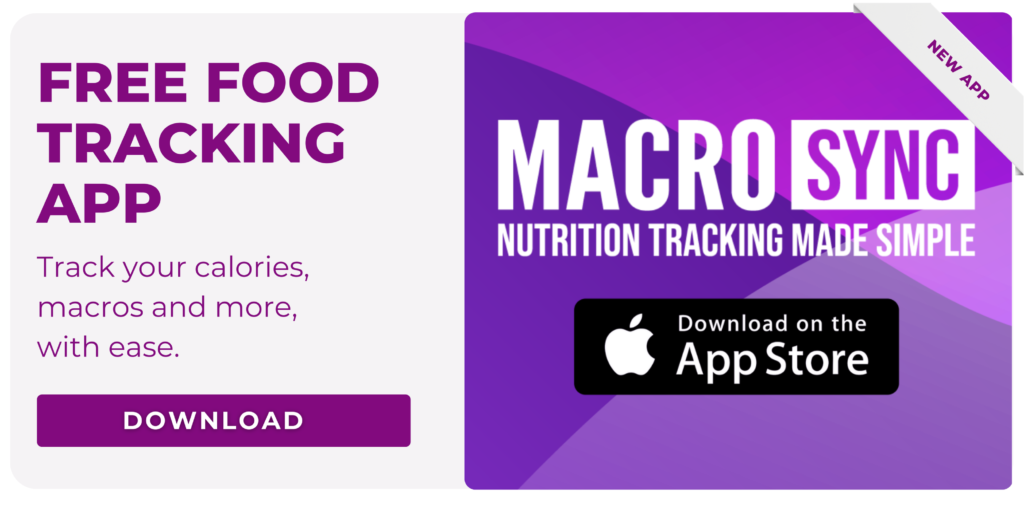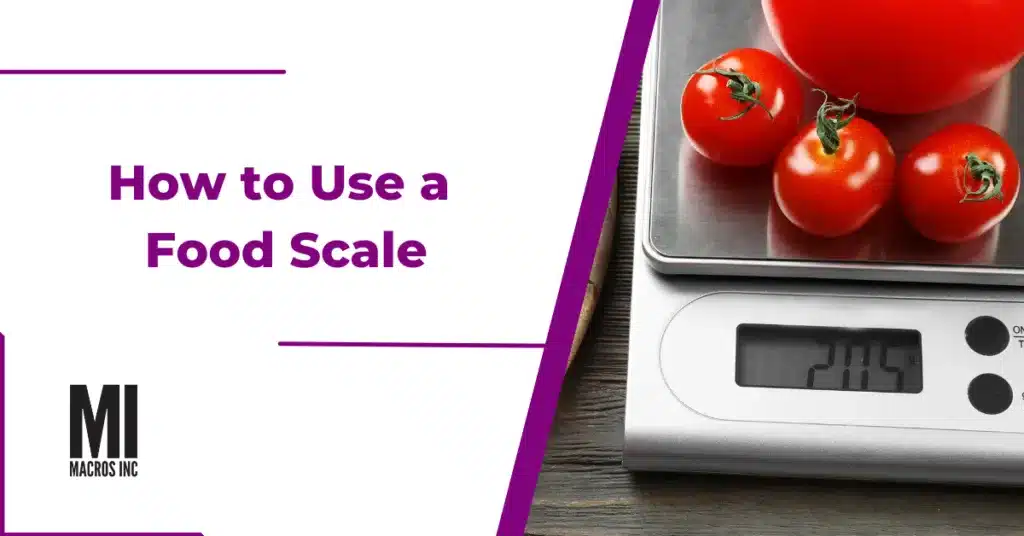As you delve into the world of counting macros, you’re likely to come across recommendations to use a food scale for your efforts. While it may seem pedantic to weigh everything out, it can actually be a solid boon for your weight loss efforts.
So let’s talk food scales!
Jump to a Topic
How to Use a Food Scale
Why Use a Food Scale?
If your goal is to track macros, weighing out your foods is by far the most accurate way. Eyeballing portions or even using spoons or measuring cups can add a significant amount of error to your numbers. This may not necessarily be a big deal in of itself, but over the course of a day, the inaccuracies can add up to a significant number of calories. This is particularly true with calorie-dense foods.
For example, let’s look at peanut butter. A typical serving is around 32g, but labels also tend to list this as two tablespoons. I’m pretty bad at estimating out sticky foods with a spoon. As such, I’m quite likely to put a little bit more on than intended. Say I accidentally add just a half tablespoon more, bringing the total closer to 40g.
- 32 grams is about 188 calories.
- 40 grams is about 235 calories.
With just one small error, I added almost 50 calories to my totals for the day. Now picture all of the other things that are commonly measured with spoons and cups, such as butter, nuts, and other calorie rich foods. If that same error applies to each of them, I could end the day several hundred calories over what I think I ate. Seeing as a few hundred calories can be the difference between a calorie deficit and maintenance, this may very well cause my progress to stall out.
So while weighing may seem like an unnecessarily strict part of dieting, it can be a very useful tool for potentially troubleshooting your approach, and saving you a headache in the long run.
Now let’s go shopping.
Picking a Scale
There is a large variety of different food scales available for purchase. They are occasionally sold in stores, but you’ll probably have an easier time by ordering online. For your intents and purposes, most food scales will do the trick, so don’t over think it. For some help, though, here are a few considerations for picking a food scale.
Cost
You shouldn’t have to drop too much money on a scale. Most of the common ones are about 10-20 USD, and even cheaper when bought on sale. The price is usually driven higher when the scale has additional built in features, such as different measurement units, digital displays, and other bells and whistles.
Speaking of which…
Features
You should generally keep these simple as well. The only mandatory feature you need on a scale is the ability to weigh in grams. Many of the other features offered from scales are generally unnecessary or even inaccurate. If you do want to look at other factors, consider things like a plugged in vs. battery operated scale, how clear the display is to read, and other user reviews.
You also want your scale to work properly. So let’s talk about that.
Accuracy and Precision
These two metrics determine how effective your scale will be in assisting you with your goals. While the two terms are commonly interchanged, they actually refer to two different things.
Accuracy refers to how close the scale’s readings are to the food’s true weight. So for example, if you take something that weighs exactly 100g and put it on the scale, the scale should read 100g. The more that the reading deviates from the actual weight, the less accurate the scale is.
Precision can be thought of as consistency. If you weigh a portion of food over and over, the readings should still remain the same for each reading. If the readings fluctuate significantly, that’s a sign that the scale is unreliable. Additionally, you want a scale that can take relatively minute measurements. The bare minimum here is weighing things in whole grams, but many scales will go more precise, giving decimals to the weight as well.
All right, now you have your scale. Let’s talk about using it.
How to Use a Food Scale
The actual setup of the scale itself is something that is likely best addressed with the instruction manual. After that, though, every scale is used in virtually the same way. Here are the basic steps for using a scale to weigh your food out.
Starting Units
Many scales have a variety of different metrics they can weigh food in. The most common ones tend to be grams (g), ounces (oz), and milliliters (mL). Of these three, you should measure your food in grams. I recommend grams over ounces because grams are a more precise unit, and food nutrition labels almost always include the weight of the portion in grams.
As for milliliters, they’re like apples and oranges when compared to grams. This is because milliliters measure volume (e.g. liquids), while grams measure mass (e.g. solid foods). So if scales can’t actually measure milliliters, why are they included?
The reason is that most scales assume that 1mL equals 1g. With water, this is true. However, this does not necessarily apply to other liquids. Denser liquids such as syrups and dressings can weigh more than 1g per mL, skewing the results. When dealing with liquids, they should actually be measured with things such as cups and spoons. In short, it’s a matter of using the right tool for the job.
How to Weigh
The most important part of the weighing process is taring the scale. Taring is simply the act of removing the weight of the container from your measurement. This is also known as “zeroing” your scale. Fortunately, it’s a simple process:
- Turn the scale on.
- Place the bowl, dish, spoon, etc. on the scale. The scale will display its weight.
- Press the “zero” or “tare” button on your scale (the term varies from scale to scale).
- The reading should return to zero again. Now you can add your food to the dish and get its weight.
- When done, remove everything and hit tare again to bring the reading back to zero. Repeat for each food you wish to measure.
Also, you can use this principle in reverse on the container the food is stored in. Place the container on the scale, tare it to zero, then remove the portion that you’re going to eat from the container. The value on the scale will turn negative. If you remove the negative part of the reading, i.e. take the absolute value, that number is how many grams you removed from the container itself.
Logging Food
Once you have the weight value for your foods, you will want to log them into a food tracking app. These apps will automatically take the info from a nutritional label and scale it appropriately to your amount of food. This saves a lot of headache in terms of crunching numbers by hand. These apps will also show you how many calories and macros you have left for the day, so they’re certainly useful for more than one reason.

Wrap Up
While getting into the habit of weighing and logging food is a bit daunting, it becomes a lot easier with practice. However, doing so can go a long way toward keeping your weight loss from slowing or stalling out. You can think of it as front-loading some of the work now to save you more trouble later.
Now that you know the way (weigh?), you’re all set!
Try our nutrition coaching, for free!
Be the next success story. Over 30,000 have trusted Macros Inc to transform their health.
Simply fill out the form below to start your 14-day risk-free journey. Let's achieve your goals together!

